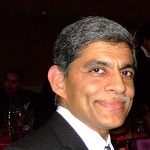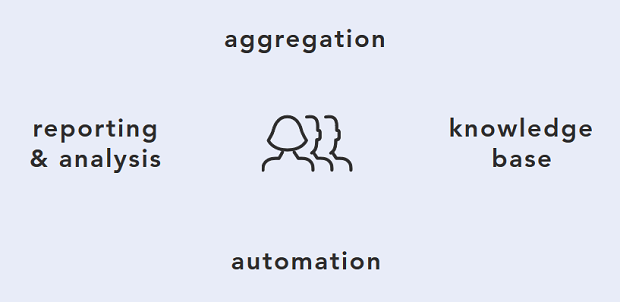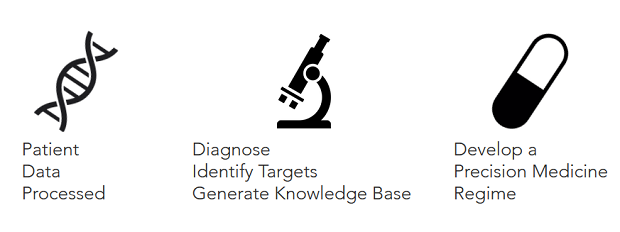* – This article has been archived and is no longer updated by our editorial team –
Below is our recent interview with Gans Srinivasa, CEO at Omics Data Automation. Ganapati ‘Gans’ Srinivasa directs product system design and oversees customer interaction at Omics Data Automation. While at Intel, Gans delivered methodologies that greatly reduced genomic data pipeline execution time for the Broad Institute. He also led the Intel team that created the Collaborative Cancer Cloud and the OHSU Research ExaCloud. As Chief Architect of Xeon Servers at Intel (2001 – 2013), he led the architecture design of more than eight server chips, including the first multicore server for Intel Corp. He also established the Heterogeneous Computing efforts and three academic collaboration centers at UC Berkeley, Technion Israel, and UCLA.

Q: Could you tell us your story and something more about Omics Data Automation?
A: Omics Data Automation is a startup based in Beaverton, OR incorporated in OR. At ODA doctors, engineers, and programmers all collaborate and work together to create tools to enable precision medicine. We use our combined expertise to specifically tackle the growing problem of big data. Medicine is quickly becoming a bid data industry. Advances in high throughput sequencing and clinical imaging are generating bigger and more complex data which hospitals are struggling to efficiently store, scale up, quickly recall, and run compute across multiple data types. We have developed a framework that allows any organization working on disparate medical data to do just that.
 Recommended: Fundraising Website GiveHope Raises $500K To Utilize And Develop Technology That Empowers Positive Change
Recommended: Fundraising Website GiveHope Raises $500K To Utilize And Develop Technology That Empowers Positive Change
Q: What inspired you to start working on Omics Data Automation?
A: Our work with cancer was inspired by the Pulitzer prize winning book The Emperor of All Maladies by Siddhartha Mukherjee. The book describes the history of cancer, starting with the first recorded history of a mastectomy performed by Queen Atossa; who asked her slave to amputate her breast with a sword after discovering a growing lump. The book than continues the narrative of describing the history of cancer and concludes with a prediction; that one day in 2050 Queen Atossa will walk into a clinic with a thumb drive which has all of her genetic data, there she will be diagnosed with cancer, the cancerous tissue will be sequenced, and a genetic specific treatment will be determined for her “all in a day”. Our vision is to help make this a reality by 2020.
Q: You have recently raised $747K could you tell us more about your recent funding round?
A: We were just awarded an NSF SBIR Phase II Grant: Robust Medical Data Aggregation to Enable Advanced Approaches to Precision Medicine. This grant will continue to fund our research from our Phase I grant which funded the integration of various clinical data into one ‘data pool’ eliminating data silos across different clinical data types. During Phase II of this project, this custom (sparse matrix) approach to data storage will be adapted to handle microscopy images of cancer and other diseased tissues. The Framework, with its integrated genomic and image databases, will be marketed to healthcare systems, biotechnology companies, and pharmaceutical companies interested in applying advanced analytics on large, complex datasets. In parallel we have developed tools for both clinicians and researchers to be able to access the data housed in our framework, and are going to be launching the software early 2019.
Q: How do people typically discover or become aware of your company?
A: Many of our founders, and principals have extensive history in medical and genetic industries. We have strategically developed partnerships and customers. We have deployed, and refined our framework with those customers and are working on a wide commercial launch early 2019. With our product launch around the corner we are starting to expand our customer acquisition and marketing efforts, which will be lead by Aleksandr ‘Aleks’ Shargorodskiy our new Director of Business Development.
Q: What can we expect from your team in the near future?
A: We hope to disrupt current treatment of complex genetic diseases! We want to eliminate the current data silos, and enable computation across all relevant medical data to create insights which are difficult to obtain without a computational resource. We want to provide a robust framework, and tools so that doctors and researchers can work together to create a more personalized treatment plan. So that drugs can be created to precisely target specific g gene mutations which were discovered by the researchers. So that in a few years a patient can come into a clinic, get their diagnosis, clinical testing, and treatment plan “all in a day”.

 Recommended:
Recommended: 